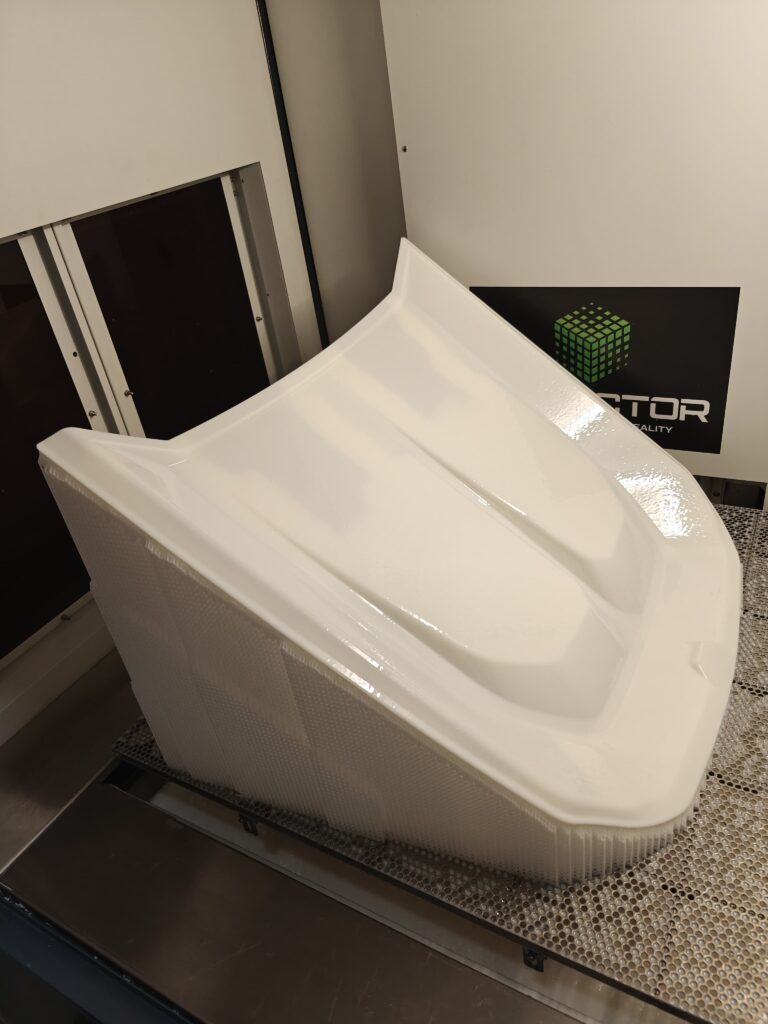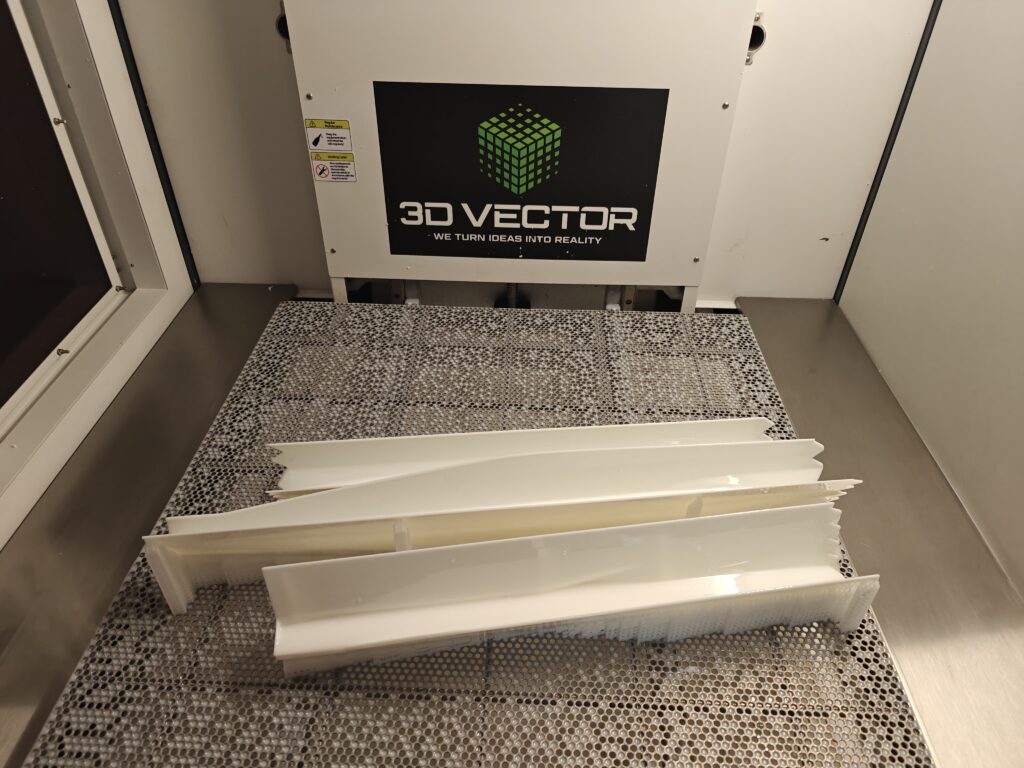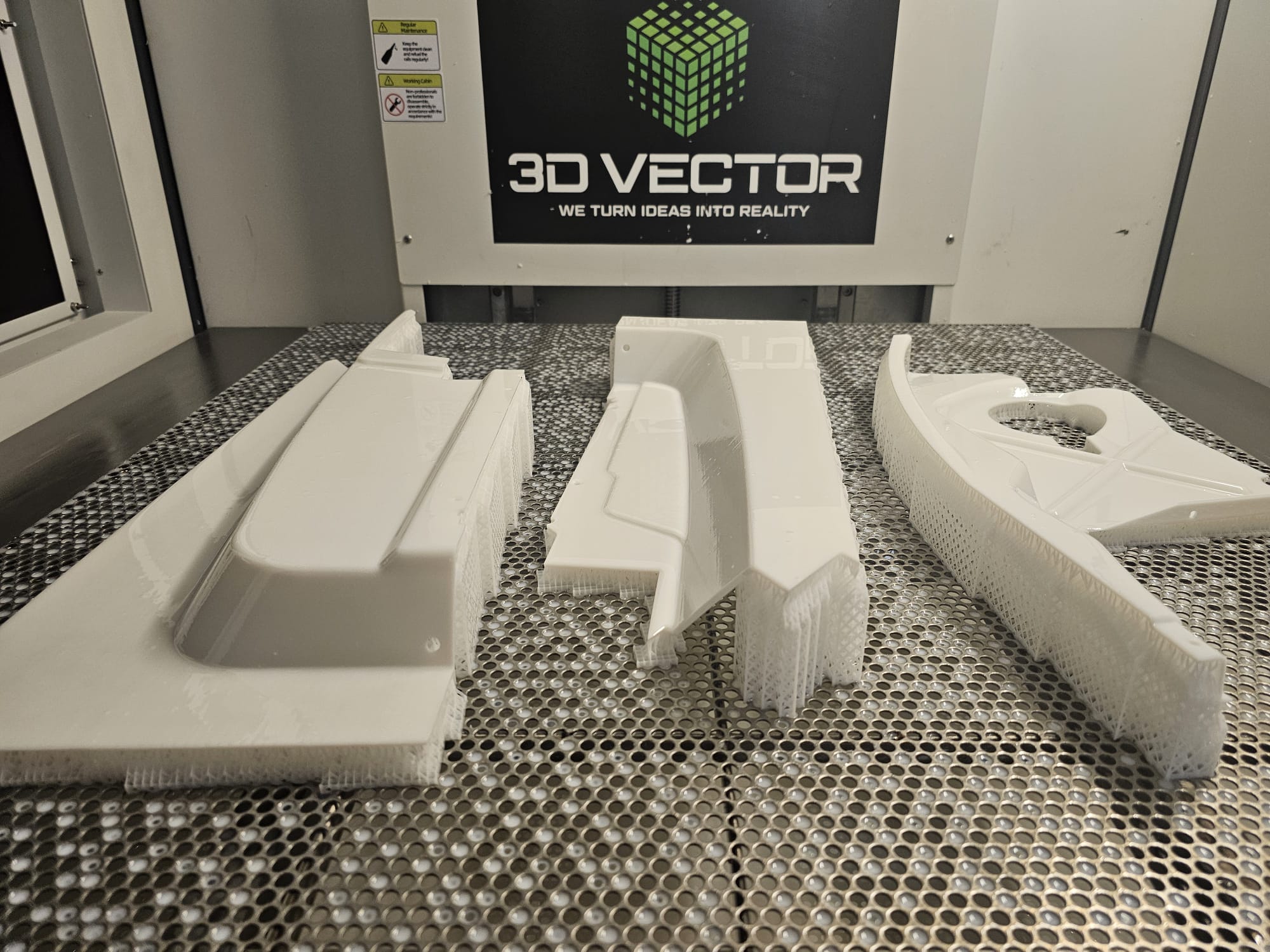What is Large-format 3D Printing?
Large format 3D printing refers to additive manufacturing processes that produce large-sized parts and components, often exceeding the size limits of conventional 3D printers. This technology enables the creation of large-scale prototypes, tools, or end-use parts with precision, speed, and cost-efficiency. 3DVector provides large-format 3D printing services that cater to industries such as automotive, aerospace, architecture, healthcare, and more, using advanced materials and innovative printing methods to create high-quality parts that meet your unique project needs.
The Technology Behind Large Format Printing
Large format 3D printing refers to producing parts that exceed the typical build volumes of standard 3D printers. Standard desktop machines generally have build volumes in the range of 200mm³, but large-scale 3D printing pushes this boundary to accommodate parts several feet in each dimension. This capacity is essential for industries like aerospace and automotive, where component size and durability are critical.
The process is driven by various additive manufacturing techniques, such as Fused Deposition Modeling (FDM) and Stereolithography (SLA), each offering distinct advantages depending on the material requirements and the desired application. At 3DVector, we focus on offering a flexible range of options, ensuring that we meet the specific needs of each project.
Applications of Large Format 3D Printing
- Automotive and Aerospace: Large-format 3D printing enables the production of lightweight, durable components that are critical in the automotive and aerospace industries. Instead of producing parts that require multiple manufacturing steps or assembly, entire sections can be printed in one go, improving structural integrity and reducing production time. For example, components like aircraft wings, car panels, and engine parts can be produced with fewer seams and less material waste.
- Architecture and Construction: For architects and builders, large-format 3D printing offers the ability to create large structural elements or detailed models directly from CAD designs. This significantly reduces lead times while offering greater freedom in design. Complex forms that would traditionally require extensive craftsmanship or expensive molds can now be printed quickly and efficiently.
- Medical Devices: The medical field is increasingly using large-format 3D printing for custom prosthetics and surgical models. 3D printing allows medical professionals to create patient-specific devices with precise measurements. This not only improves the fit and comfort of medical devices but also leads to better patient outcomes.
- Industrial Tooling: Tooling for manufacturing processes often involves complex geometries and high-strength requirements. Large-format 3D printing provides an excellent solution for creating durable, high-performance tools. This reduces lead times and allows for more frequent updates or modifications to tooling without the high costs associated with traditional manufacturing techniques.

Large-format 3D printing opens the door to numerous applications across various industries, offering unique benefits such as cost reduction, part consolidation, functional prototyping, and customized manufacturing. Below are key areas where large-format 3D printing adds value:
- Cost Reduction & Part Consolidation
In traditional manufacturing, creating large, complex parts often involves a lengthy and expensive process of casting, molding, or subtractive manufacturing. These methods not only require significant time and labor but also involve high costs due to the tooling and raw material waste involved. Large format 3D printing revolutionizes this by allowing single parts to be printed directly from digital models, bypassing the need for tooling or multiple assemblies. With 3D printing, manufacturers can reduce the number of parts in a product by consolidating them into a single, seamless structure. This reduces assembly time and eliminates weak points caused by seams or fasteners, leading to stronger, more durable products. Applications in industries like aerospace and automotive benefit significantly from part consolidation, where weight reduction and structural integrity are critical. Furthermore, cost savings are realized through reduced material waste, lower labor costs, and faster production times. Complex parts that once required multiple manufacturing stages can now be completed in a fraction of the time using large-format 3D printers.
- Large Scale Functional Prototyping
Most standard desktop 3D printers are limited by a small build volume, typically around 12″x12″x12″. This limitation forces designers working on larger projects to either scale down their prototypes or print and assemble multiple smaller parts. With large-format 3D printing, full-scale prototypes can be produced without the need for assembly or scaling compromises. Functional prototyping is an essential stage in product development, allowing designers to validate concepts, test functionality, and identify areas for improvement. Large-scale 3D printing enhances this process by enabling the creation of life-sized prototypes that are more representative of the final product. This capability accelerates the design iteration process, giving engineers and designers the ability to refine their prototypes more efficiently and accurately.
In terms of materials, common options for large-format prototyping include:
- Aesthetic plastics like ABS and PLA, offer good surface quality and ease of use.
- Functional plastics like polypropylene (PP) or polyethylene (PE), are more suited to applications where durability and flexibility are required.
- Performance plastics such as HDPE or metal-impregnated polymers for higher-strength and industrial use cases.
- Customized Manufacturing
Customization is a major benefit of large-format 3D printing, particularly in industries where bespoke or low-volume products are required. Traditional manufacturing methods like injection molding or casting are optimized for high-volume production, making custom, low-volume items expensive due to tooling costs and longer lead times. Large-format 3D printing, however, enables the creation of custom parts with a much faster turnaround and at a lower cost.
For instance, in the medical industry, patient-specific devices such as prosthetics or orthopedic implants can be tailored precisely to individual anatomical requirements. Similarly, in architecture, custom building components or unique design elements can be quickly printed, reducing the time and cost associated with traditional fabrication methods.
Advantages of Large Format 3D Printing
The adoption of large-format 3D printing brings numerous benefits across multiple industries:
- Speed: Large components that traditionally require weeks or months to manufacture can now be printed in days, allowing for rapid prototyping and fast production.
- Single-Part Production: By consolidating parts, 3D printing reduces the need for bonds or seams, increasing the strength and performance of the final product.
- Material Versatility: Large format printing offers a wide selection of materials, from high-strength plastics to metals, allowing for customized solutions based on specific application needs.
- Cost Efficiency: By eliminating the need for tooling, molds, and complex assemblies, large-format printing significantly reduces production costs and minimizes material waste.
Alternatives to Large Format 3D Printing
While large-format 3D printing is an excellent solution for many projects, other manufacturing methods may be more suitable depending on the project’s specific requirements. At 3DVector, we offer additional services to complement 3D printing:
- CNC Machining: Ideal for projects requiring tight tolerances and high material strength, CNC machining provides precise machining of parts in metals and plastics, making it suitable for applications where accuracy is paramount.
- Laser Cutting: For flat parts or sheet materials, laser cutting provides high accuracy and efficiency, making it an excellent choice for materials like metal, wood, and plastic.
- Shaft Turning: For cylindrical parts, shaft turning can produce custom shafts and other rotational components with high precision, commonly used in the automotive and industrial sectors.
At 3DVector, our focus is on delivering high-quality manufacturing solutions tailored to your specific needs. Whether you require large format 3D printing, CNC milling, or laser cutting, our team is here to help bring your designs to life efficiently and cost-effectively.
Why Choose 3DVector?
At 3DVector, we take pride in offering cutting-edge large-format 3D printing services with a focus on quality, speed, and customization. With a team of experts and state-of-the-art 3D printers, we help businesses in various industries reduce costs, improve product development times, and deliver innovative solutions. Our material options include:
- Resins for SLA printing, perfect for high-detail, fine-finished parts.
- Aesthetic plastics, such as ABS and PLA, are ideal for visual models and prototypes that require smooth finishes and ease of use.
- Functional plastics, like PETG and nylon, for applications demanding flexibility and strength.
- High-performance materials, including metals like aluminum and steel, are suited for industrial-grade applications.
These materials ensure that regardless of your project’s complexity or industry, 3DVector delivers the material versatility necessary to meet high-performance standards.


